
The Business of Fashion
Agenda-setting intelligence, analysis and advice for the global fashion community.

Agenda-setting intelligence, analysis and advice for the global fashion community.
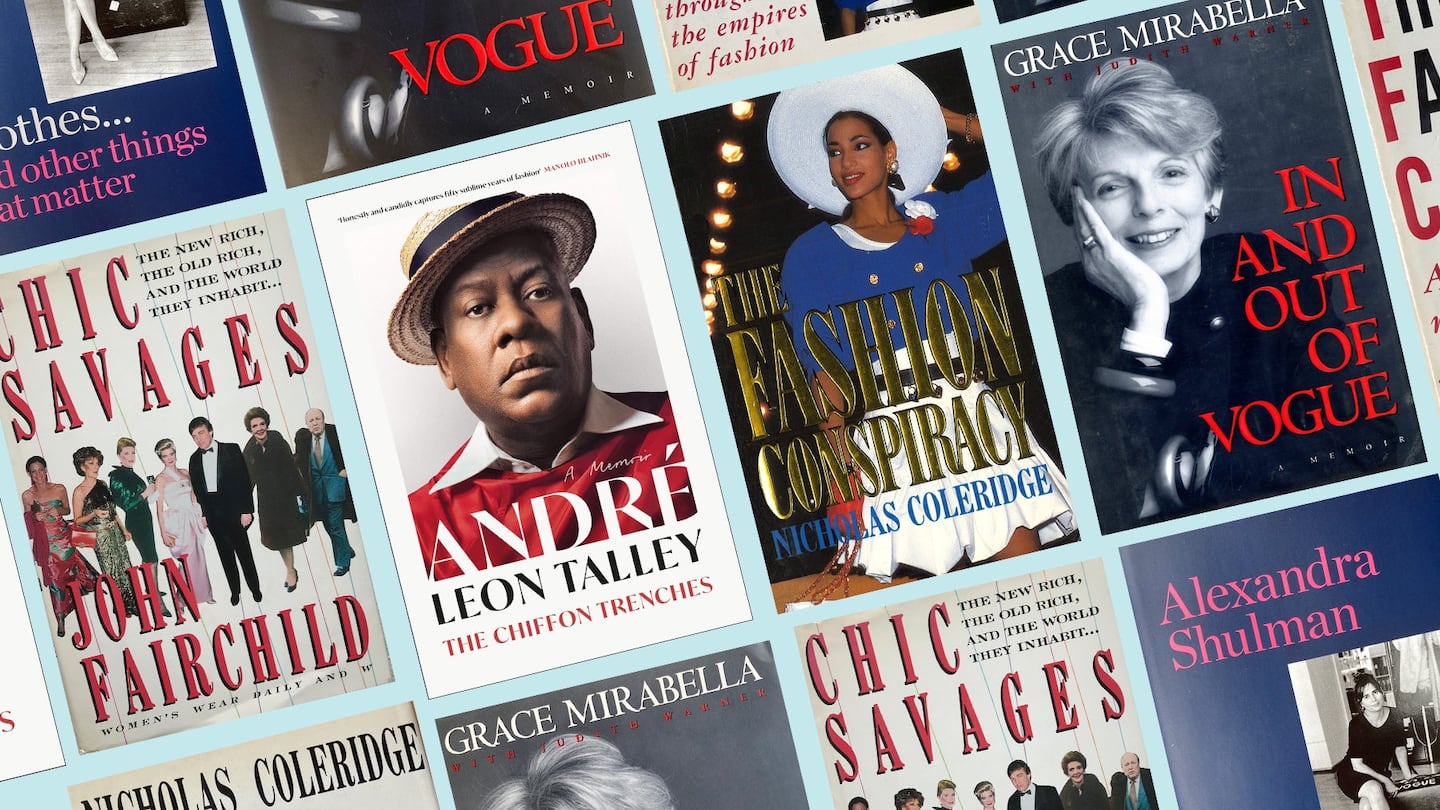
The recent furore about "The Chiffon Trenches," the new autobiography in which André Leon Talley takes aim not just at his fashion enemies but also at many of those former allies who helped him in his career, sent me back to my shelves to reconsider some other examples of the "tell-all" exposé of the intrigue, back biting and madness behind the glamorous veneer of the fashion world. For all the lunacy and hysteria there is to expose, such frank glimpses are relatively few — and increasingly rare now that the large fashion houses have such total control over the major media outlets that they can close down gossip by threatening to withhold the ever-scarcer advertising revenue. Simply put, those brave enough to tell all are regarded as backbiting the hand that feeds them, almost certainly killing off both personal contacts and a future in the small, insular and highly protective fashion industry. This is a beautiful, fragile bubble that can be burst all too easily by those waving sharp sticks.
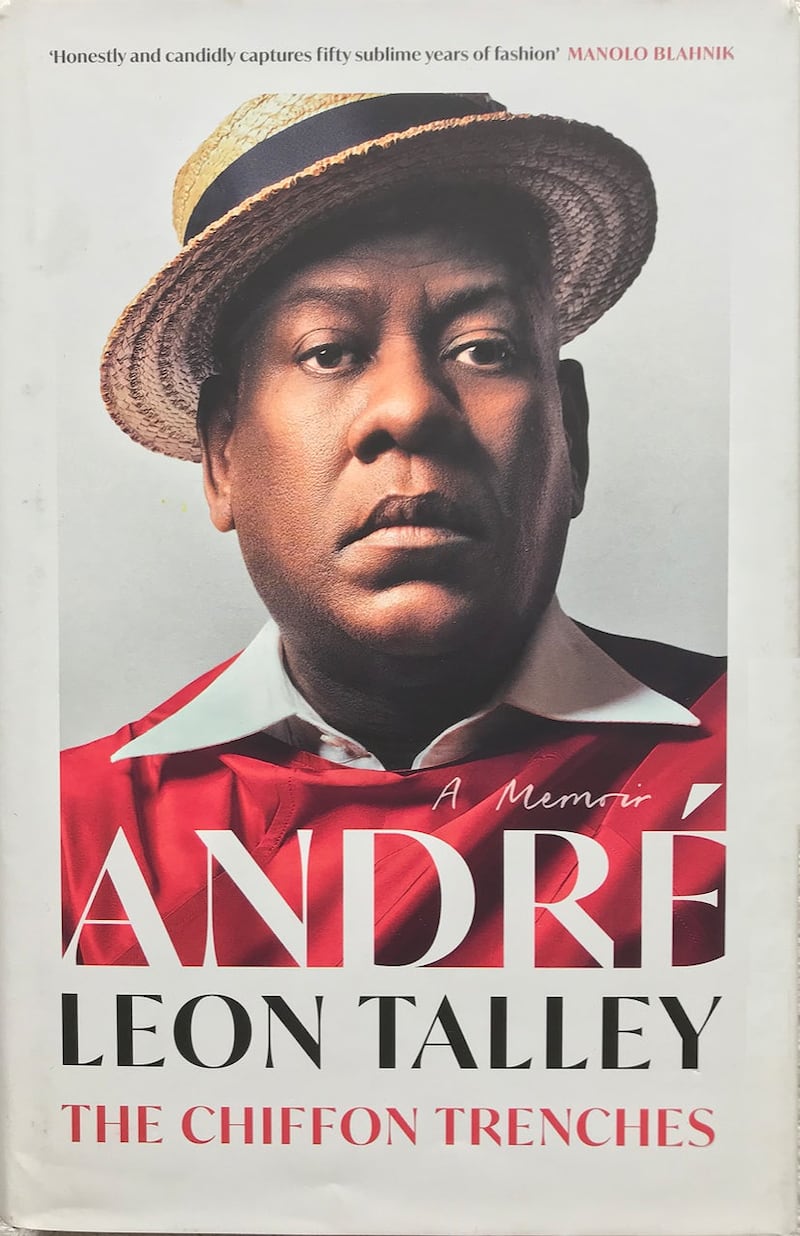
To avoid simple prurience, the successful tell-all must be well written, and André Leon Talley can certainly write (as one would expect, given his stellar journalistic career with WWD, W and, above all, Vogue). He has already published one memoir, "A.L.T.," in 2003. It described the roles of two women — his grandmother, Bennie Frances Davis, and the legendary fashion editor Diana Vreeland — in helping him fulfil ambitions not then normally available to African Americans from North Carolina: a university degree and a unique role in the fashion world. In their different ways, the two women were the rock from which he dived into the world of New York fashion.
Talley made a big splash. He worked with Andy Warhol, whose Interview was compulsory reading for cool New Yorkers, and moved on to WWD, W and Vogue. Talley took the wild world of stars, beauties and intellectuals in his stride, most usefully striking up a lifelong friendship with Karl Lagerfeld. Possessing a master's degree in French, he jumped at the offer of the post of Paris bureau chief for WWD when it came from John Fairchild.
"The Chiffon Trenches" picks up the story of a remarkable career. In Paris and back in New York, Talley knew everyone, went everywhere and used his power to work the levers of international fashion, where his height and size made him a feature of all the major shows. He worked with the very top models, photographers and stylists, and when his friend and colleague Anna Wintour took over the editorship of American Vogue in 1988, his power grew even greater. As "The Chiffon Trenches" suggests, Anna trusted his taste and his contacts with every model and designer in the business (his long friendship with Karl Lagerfeld ended ultimately in a serious estrangement but, for many years before that, Karl paid for his flights, clothes and travel, including the most beautiful luggage, just as Vogue paid for a suite at the Ritz for the shows). He became the guru to whom young designers clung because they understood his ability to open doors, including to the very grandest of the New York Ladies Who Lunched at the time, such as Jackie Kennedy Onassis and her super-elegant sister Lee Radziwill, not to mention his dearest friend Naomi Campbell.
ADVERTISEMENT
Did all of this help Talley banish the banshees that haunted him? To my mind, this ill-advised book implies that these banshees were related to his constant worry about being black and overweight in an industry dominated by the white and slim. I don't think so.
I wish Talley had not published this book. It is not a patch on ALT. In addition, there is a bitter taste of blood and old scores being settled. Behind Talley’s very good writing there is something too self-indulgent, even petulant, about this tale of hubris that makes his final nemesis almost inevitable. Talley strikes me as a modern version of Beau Brummell, the Georgian dandy who also believed the music would never stop — right up until the moment that it did.
Another of Diana Vreeland's protégés to write a book about her own career is the journalist Grace Mirabella. "In and Out of Vogue: A Memoir," published in 1995 (you can still track down copies), documents Mirabella's successful career, including 38 years without a break at American Vogue, where she first worked as Diana Vreeland's assistant before spending 17 years as editor-in-chief. She went on to set up her own magazine, Mirabella, with support and financial backing from Rupert Murdoch.

Mirabella was a fashion figure from head to toe. After graduating from Skidmore College in June 1950, she joined Macy's and later Saks, before deciding that retail was not as interesting as other aspects of the fashion business at a time that saw the beginning of the surge in international mass enthusiasm for expensive, fashionable clothes.
"In and Out of Vogue" is as racy as a novel and even now would make a much better film or TV series than the pitiful The Devil Wears Prada. Its most striking revelation for fashion outsiders is not the legendary eccentricities of Vreeland but the sheer nastiness of the top people at Condé Nast, who seem universally bitchy and bullying, secretive and ruthless. Those in its upper ranks should have been issued with a badge saying "Watch Your Back at All Times" — and possibly were!
Grace Mirabella was a victim of this system, just as Vreeland was before her. But she kept smiling as the knives were marshalled behind her back, and lived to tell the tale. This bouncy, entertaining book pulls no punches and tells it how it was.
The same can be said for "The Fashion Conspiracy" by Nicholas Coleridge, for decades the real power at Condé Nast in Britain. It’s a great regret that this book, now over 30 years old, has not been brought up to date. Even now, re-reading the original, as I frequently do, I still don't think it is too late for a new version for our times. Coleridge makes most subsequent fashion books appear boring, narcissistic or nasty, and often all three at the same time.
Coleridge’s book is so densely packed with information that it provides a comprehensive review of the world fashion scene in the late Eighties, a period of change when top designers were beginning to realise that the big bucks go to those who not only design clothes but also own everything else in their fashion goody bag. This was the period of the miracle when Italian fashion began, in Diana Vreeland’s phrase, to "prance," taking Milan from a trade centre to an indispensable fashion barometer that could not be ignored. All the other fashion hubs — even Paris — were forced to pull up their socks and start catching up.
ADVERTISEMENT
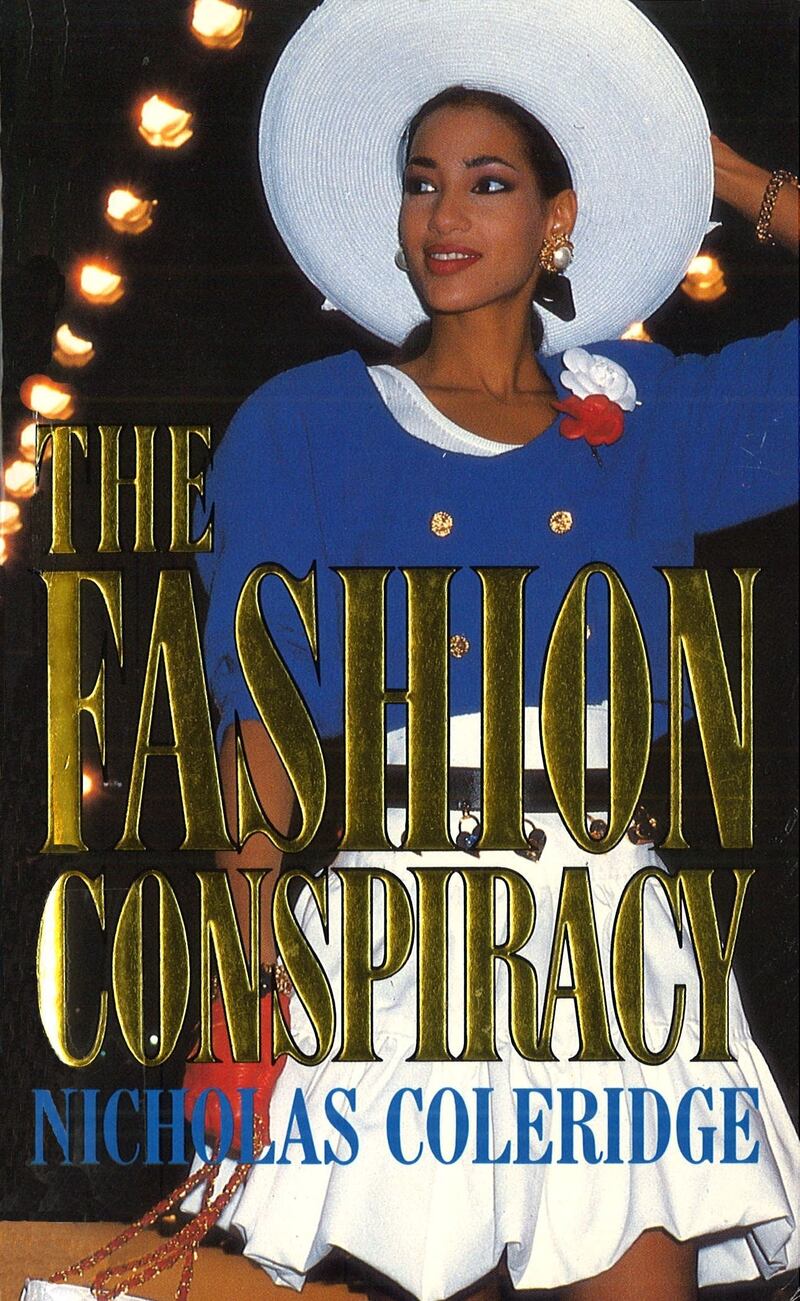
Coleridge’s sharp observation and frequent flashes of not always kind humour raise his account from a mere factual record to an insightful view of how fashion has subsequently developed. Most of the details are long out of date, but, like Mirabella’s book, "The Fashion Conspiracy" still paints a picture of the first shoots of international fashion spreading across the globe. Today, the sale of luxury clothing is embedded into the economies of nearly every country in the world. This deceptively perky book is an account of how it all happened, from ladies who lunch and shopping malls to international luxury travel and over-production at alarming levels.
If that makes "The Fashion Conspiracy" sound dull, I can only say that it is one of the many reference books I use but one of the few that, along with John Fairchild's two fashion books, contain information and interviews that are still relevant today — and are witty, too.
The book is particularly worth searching out for its 400 interviews with people at all levels of the fashion universe, from Asian workers barely paid a living wage to top journalists, designers and businessmen of the time (some of whom, rather grotesquely, are still working today).
John Fairchild, author of "Chic Savages" (1989), was living proof of the general observation that, the richer you are, the more powerful you are. Fairchild was lucky enough to be both rich and powerful. His family owned the fashion daily broadsheet, Women's Wear Daily, the bible of the American "rag trade." Fairchild kept boredom away by turning WWD into a personal scandal sheet he used to "send up" or "push down" designers in New York and Paris on a whim.
Fairchild was too rich and powerful to be interested in the trade news that was the backbone of his publication, so he occupied himself by making lists of the rich women who led American society. Although he was always ready to tear them apart, such privileged and fashionable women fascinated him, which is why he spent so much time keeping up to date with gossip such as who was spending millions to redecorate one of their several homes.
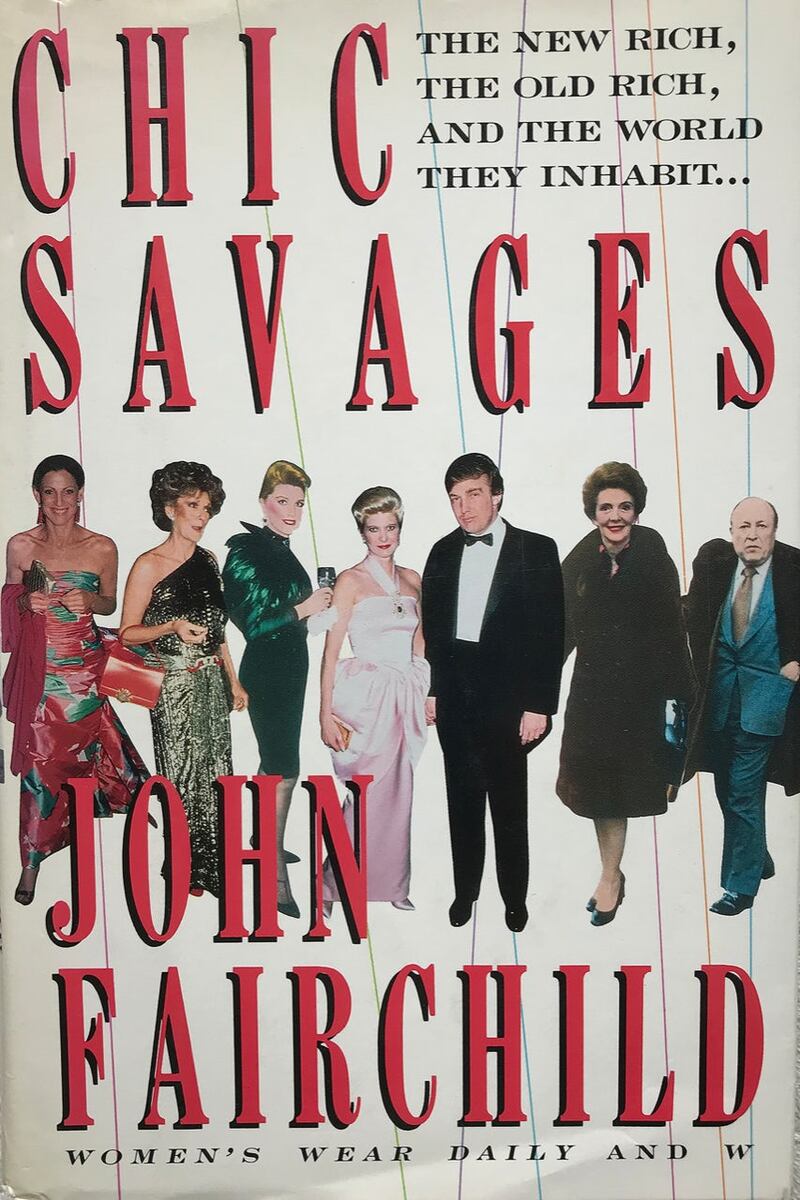
"Chic Savages" catalogues and skewers such lives — including an early but prescient and perceptive description of a much younger Donald Trump and his insatiable need to be the centre of attention (in those days as a leader of NYC society with his former wife, Ivana). Fairchild knew everyone, from the designers of Seventh Avenue to those in Europe who were among his advertisers, such as Valentino and Yves Saint Laurent. His first job in the family firm was in the Paris office, where he learned about journalism and started to bring WWD into the modern world.
Years later, Time magazine described WWD as "that gossipy bitchy newspaper of manners, friends and scandal." Fairchild's response was to point out that fashion was a "gossipy, theatrical, unscrupulous, dogmatic and opinionated business." It was this insight that allowed him to turn WWD into a "must-read" for designers, Hollywood, retailers and those rich women whose foibles it catalogued.
"Chic Savages" is a collector’s item today, with an inflated price to match, but it remains a beacon of expertise combined with sharp, slightly poisonous evaluation that will still make the victims weep while Fairchild smiles down from his cloud in heaven. He was a natural-born agent provocateur in an industry whose idiocies and false values were rife for satire — and he made a fortune on his own account. How could he not in a world as insecure as that of fashion and high society?
ADVERTISEMENT
"Chic Savages," written by an expert observer, is packed with wisdom, common sense, prejudice and laugh-out-loud commentary. It is also not half as dated as one might think. The same is true of Fairchild’s earlier book, "The Fashionable Savages," published in 1965. That book is also scarce, but it is worth searching out by those who, like me, love the Fairchild take on the madness of Manhattan.
To conclude by coming back up to date, Alexandra Shulman's "Clothes and Other Things that Matter" is a clever title for a clever idea from a clever woman with an impressive journalistic family tree (Shulman's father was the influential 1950s theatre critic Milton Shulman). It seems entirely appropriate that the woman who was editor of British Vogue for 25 years should nail her colours to the mast before the reader has even opened her book.
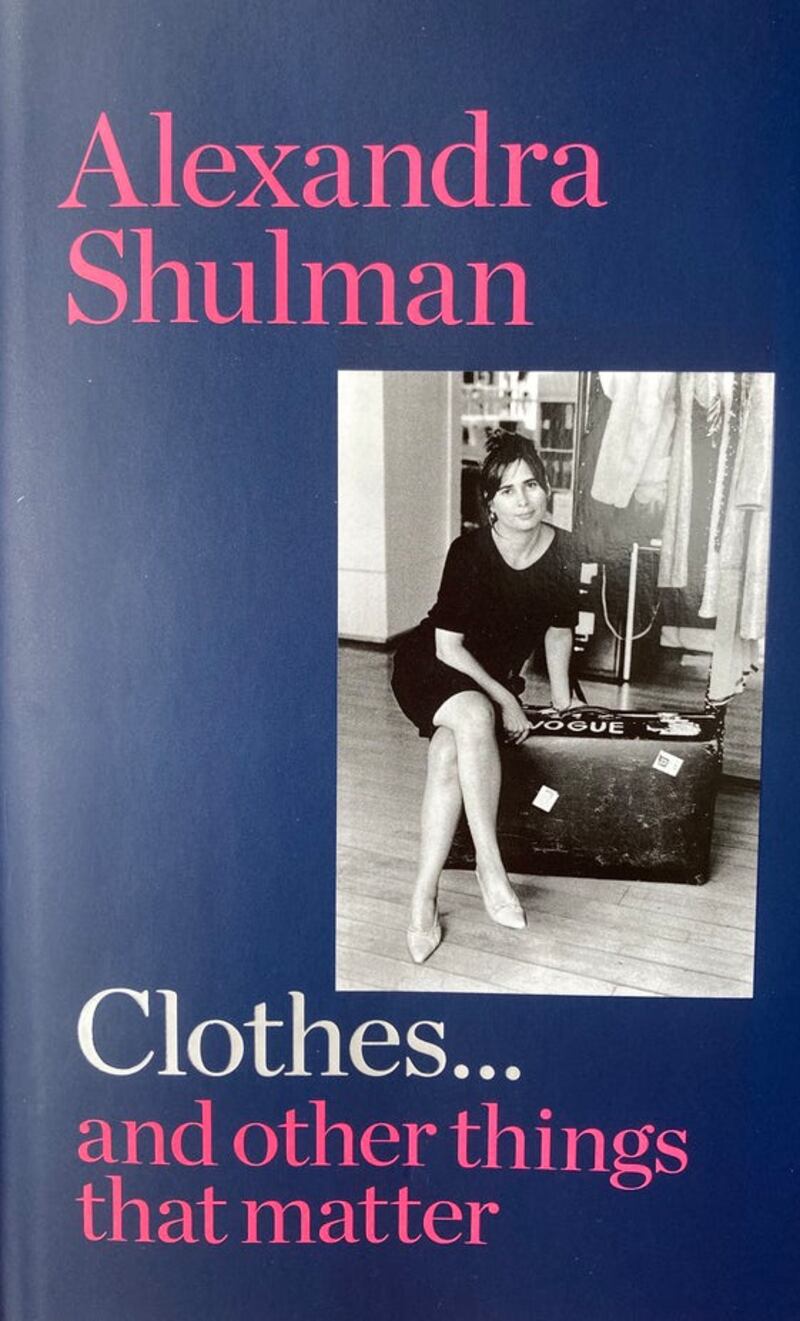
But this is not just another book about high fashion or even about the privileged lifestyle that comes with success in one of the toughest and least secure of fashion roles: that of a magazine editor. The job comes with perks, of course, and they are often in the shape of clothes. Shulman’s book describes not only presents from designers whose work she admired but also clothes she bought for herself in the high street.
Regardless of their provenance, Shulman clearly has plenty of clothes in her closet, and she uses a selection of garments to tell the beguiling story of what she wore for different occasions in her working and social life. The 38 entries that make up the book discuss the when, why, who and how of the clothes she chose to keep, for reasons practical, romantic — or both. She selected the garments from the large number she discovered when she itemised her wardrobe in winter 2018: 22 coats, 35 dresses, 31 pairs of knickers, 34 pairs of heels and 37 handbags. For each category, she tells not only the story of the clothes but also how it felt to wear them.
That makes the book a very personal and entertaining romp through her view of the industry, enhanced by many pictures of Alex herself and of heroines such as Patti Smith, Alexa Chang and Diane von Furstenburg. As such, it will have considerable appeal, especially to young fashion freaks.
Shulman’s book is definitely not a "tell-all," however. She is far too much of an industry insider for that. Perhaps that does not matter. The sort of readers to whom it is most likely to appeal, I suspect, are those who keep the tills ringing with their desperate need for more, more and ever-more new clothes, like the Emperor in Hans Christian Anderson’s story. Such readers believe wholeheartedly in the glamour of the fashion industry, and have only a limited interest in the details of the bitching and back-stabbing that might tarnish them. They might also be disappointed by this warm and personal account of a life rather different from that of other top international fashion editors in the relative absence of both high glamour and nastiness.
Related Articles:
[ Colin's Column | Tomes of the Times: Holiday Reading 2019Opens in new window ]
[ In Age of Online Inspiration, Fashion Creatives Still Love Beautiful BooksOpens in new window ]
[ Colin's Column | Tomes of the Times: Summer Reading 2019Opens in new window ]
The race to dress fashion’s biggest stars has gotten tighter — and brands are deploying fresh, social media-friendly tactics to generate buzz.
The Business of Fashion is seeking candidates for a six-month, part-time, paid reporting fellowship with our editorial team, designed to empower aspiring Black journalists.
The stylist is set to unveil a bi-annual print magazine and digital platform, with a team that includes Holly Shackleton and Fran Burns.
Luxury book publishers — and husband and wife — Prosper and Martine Assouline join BoF founder and editor-in-chief Imran Amed to discuss the genesis of their publishing business and how they are growing it into a global lifestyle brand.